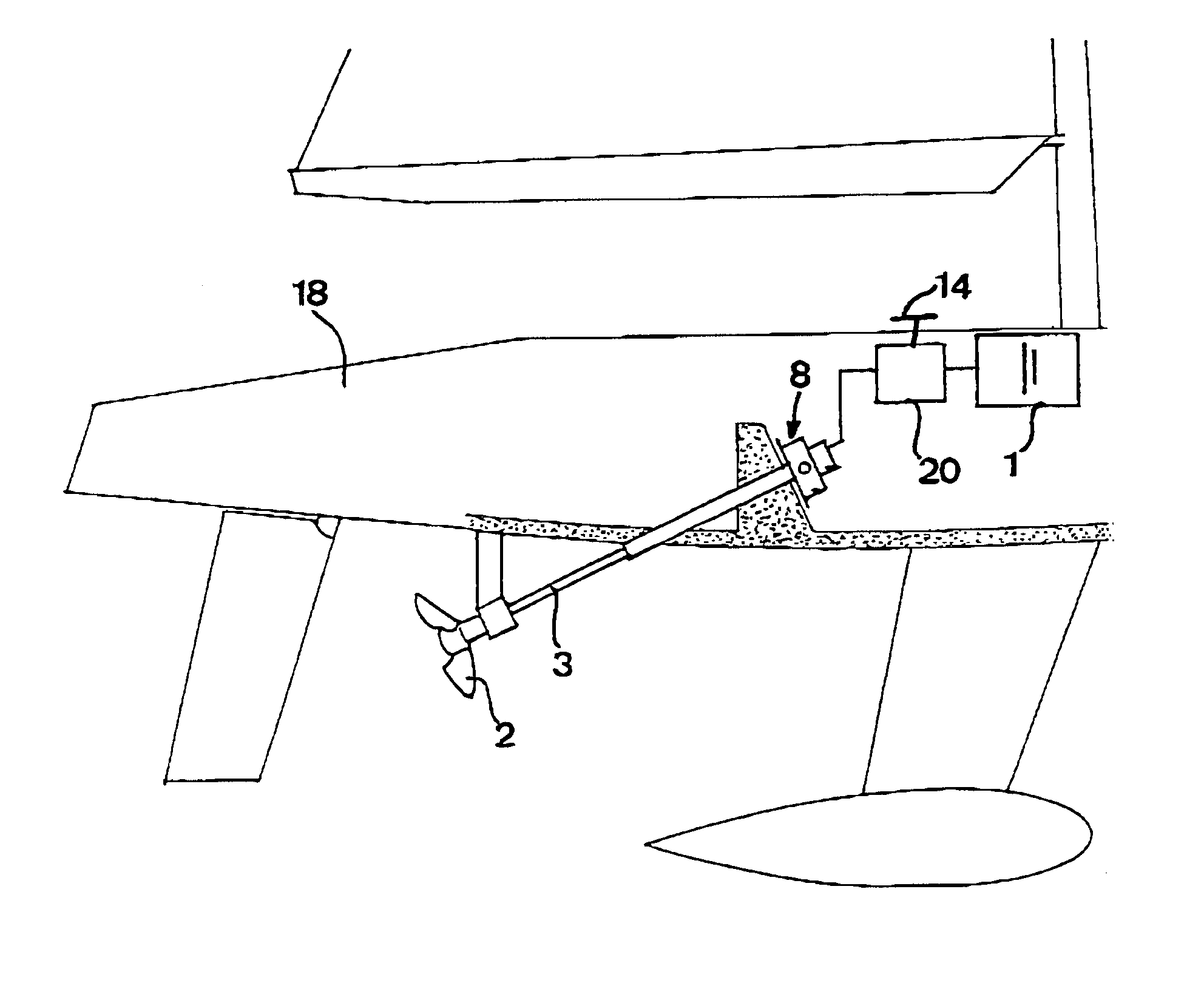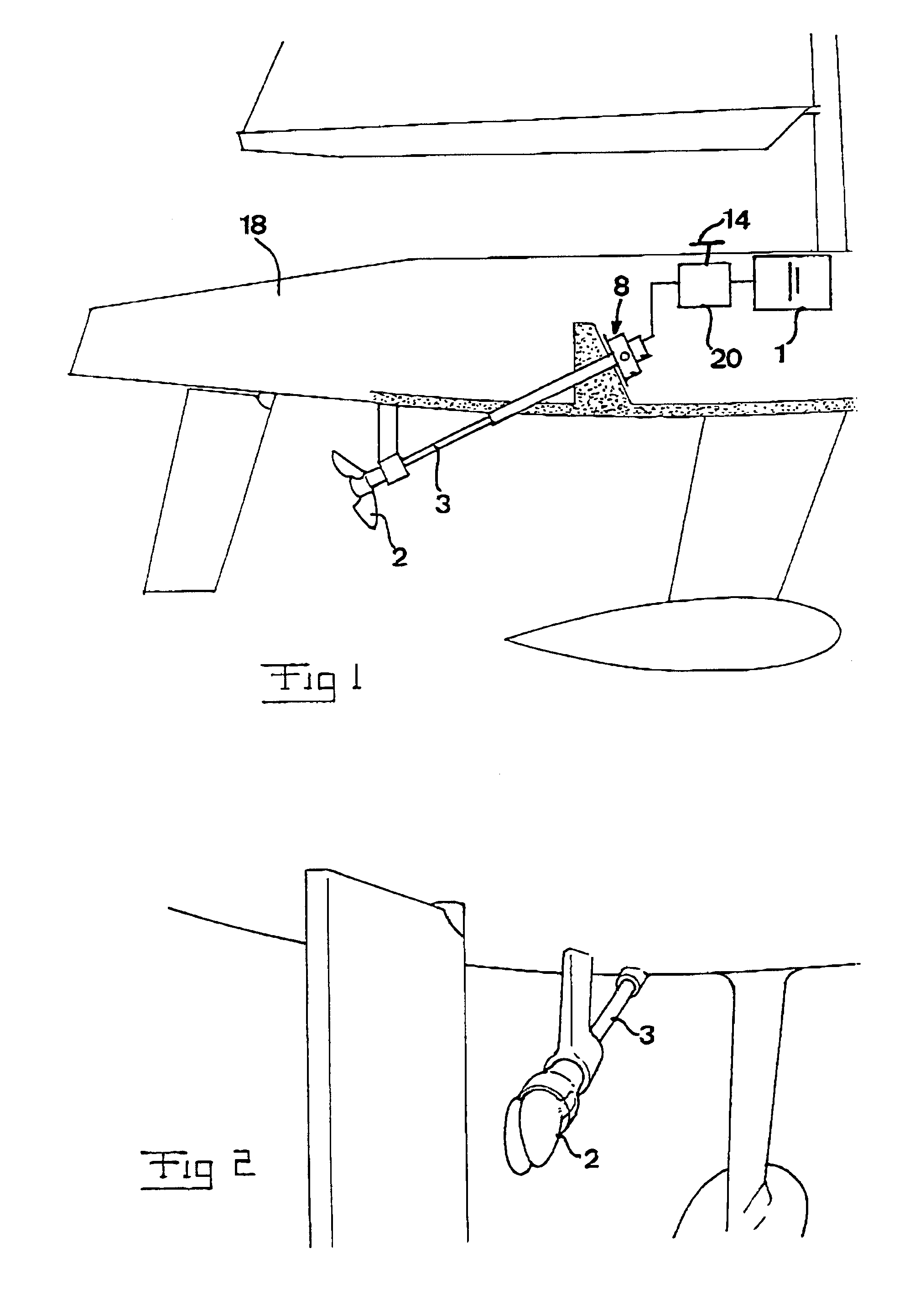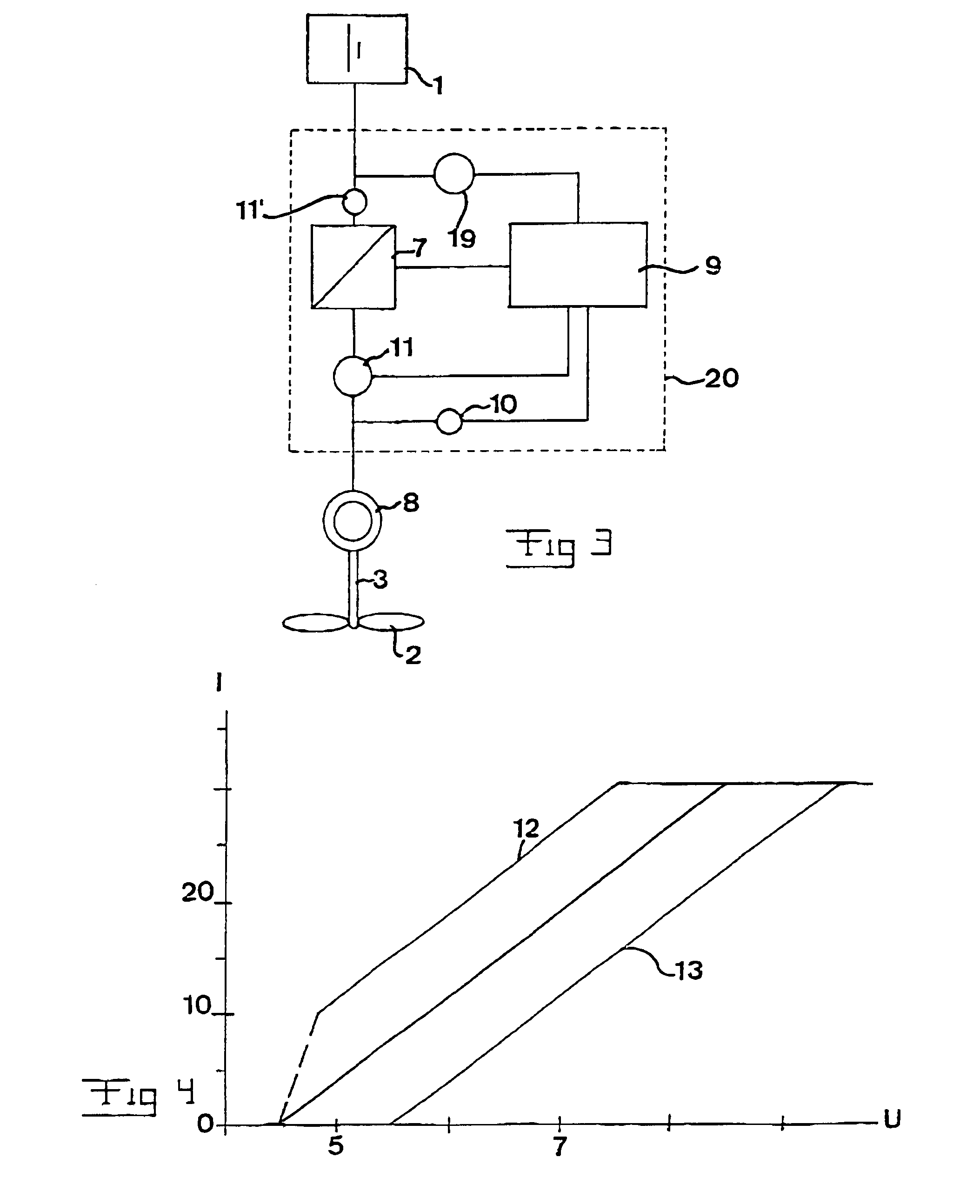Device for charging at least one electrical battery on board a boat
a technology for electric batteries and boats, which is applied in the direction of vessel auxiliaries, vessel construction, electric generator control, etc., can solve the problems of 4 volts out of the direct voltage machine, the number of revolutions of the axles is mostly too low, and the voltage is far too low to enable the charging of the battery
- Summary
- Abstract
- Description
- Claims
- Application Information
AI Technical Summary
Benefits of technology
Problems solved by technology
Method used
Image
Examples
Embodiment Construction
[0024]The overall construction of a device for charging at least one electric battery on board a boat is illustrated in FIG. 1. It is preferably a question of a plurality of 12 volts batteries 1 intended to be used both for propelling the boat 18 and for supply of electricity to other equipment on board, such as refrigerator, lightening, autopilote and the like. The device comprises a propeller 2 adapted to be immersed in water and then through the movement of the boat be driven to rotate an axle 3 connected thereto. The axle 3 is in its turn connected to a rotor of an electric direct current machine. The direct current machine is preferably a permanent magnet machine, but other types of direct current machines are also conceivable, even if a permanent magnet machine is very advantageous thanks to the high energy density thereof. Other conceivable electric direct current machines are series motors and shunt motors. Through the rotation of the rotor a voltage is as usual generated in...
PUM
 Login to View More
Login to View More Abstract
Description
Claims
Application Information
 Login to View More
Login to View More - R&D
- Intellectual Property
- Life Sciences
- Materials
- Tech Scout
- Unparalleled Data Quality
- Higher Quality Content
- 60% Fewer Hallucinations
Browse by: Latest US Patents, China's latest patents, Technical Efficacy Thesaurus, Application Domain, Technology Topic, Popular Technical Reports.
© 2025 PatSnap. All rights reserved.Legal|Privacy policy|Modern Slavery Act Transparency Statement|Sitemap|About US| Contact US: help@patsnap.com



